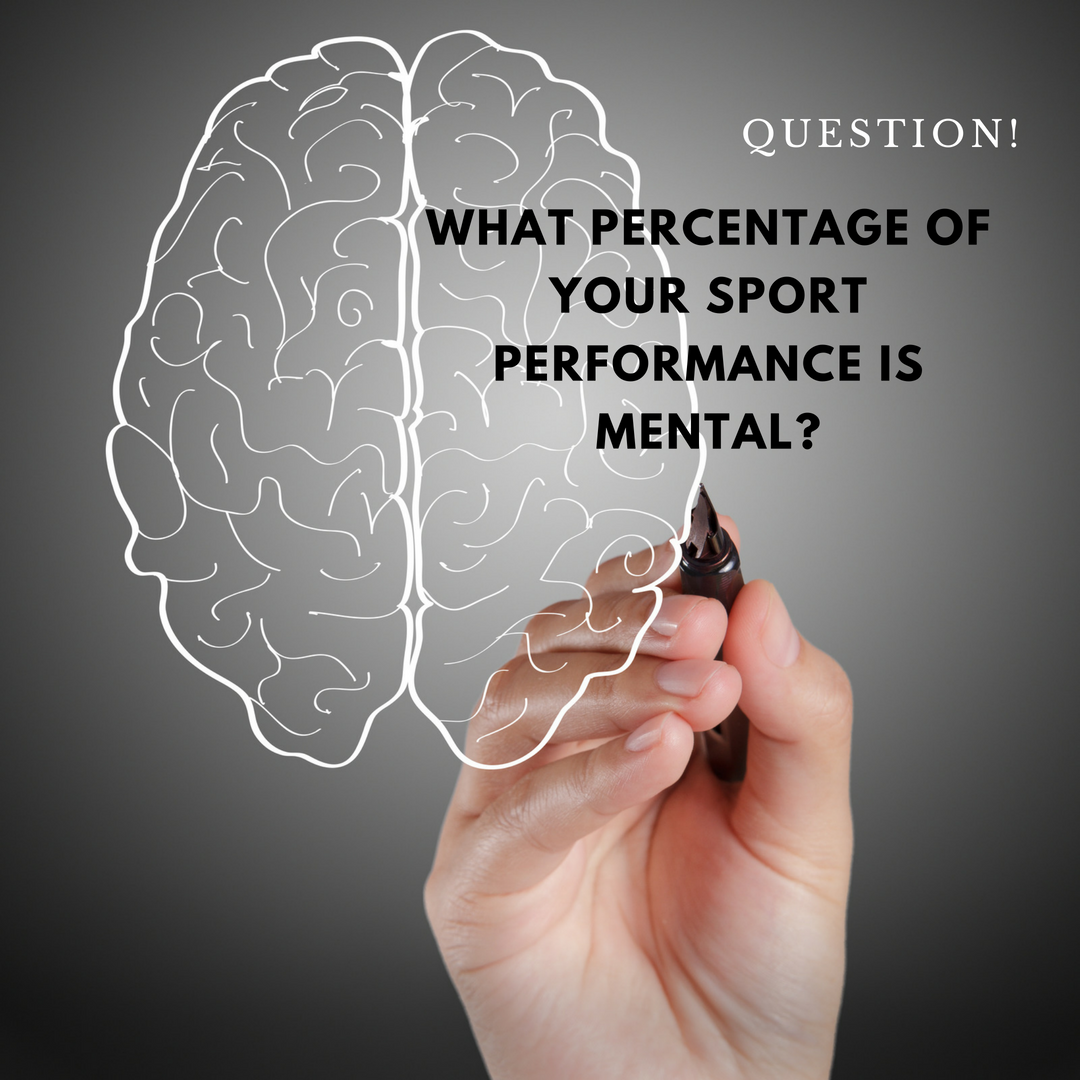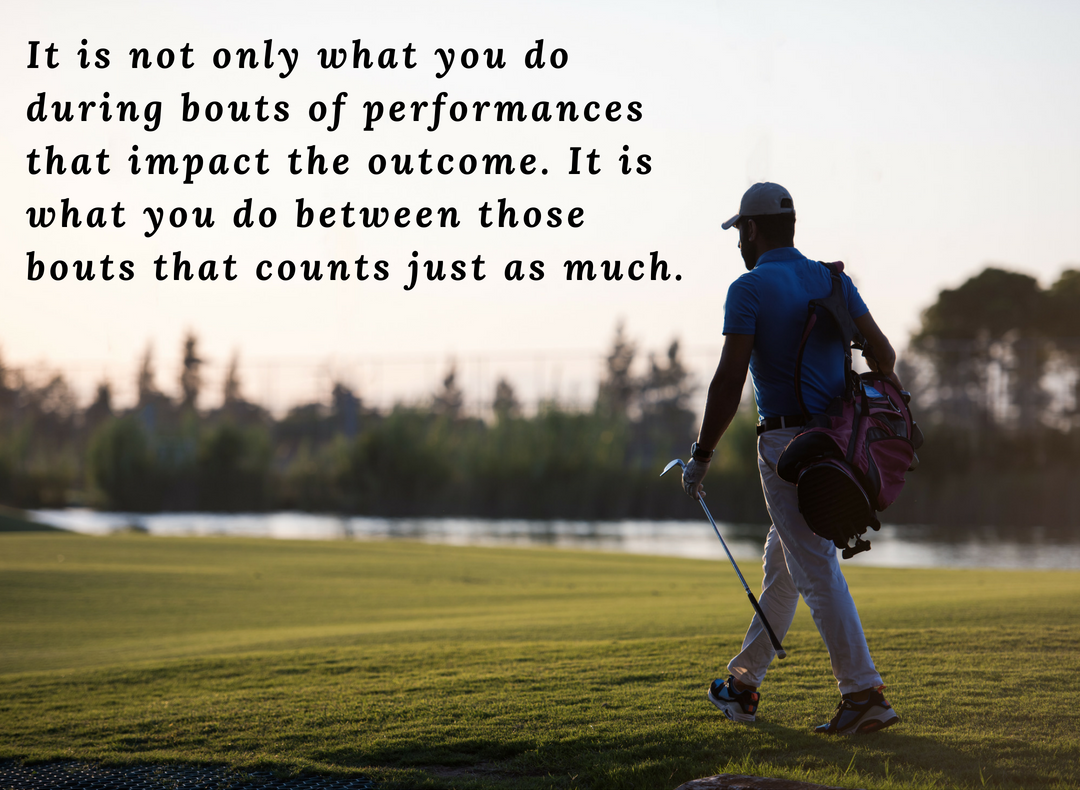Most coaches and athletes think of pre-performance (before competition) routines when they hear about performance routines. However, a routine that is used more than any other type is a training routine. Due to the sheer amount of time athletes must train to be high performers, training routines have a larger impact on overall performance outcomes compared to any other routine.
For every athlete, there are moments when you are not 100% focused or just going through the motions. Training routines help athletes get the most out of every practice, every task, every rep. In fact, training less with full focus and appropriate intensity is more beneficial than training more with 70% focus and intensity. What you do in training directly relates to what you do in competition. Athletes can hinder their growth by simply not simulating in practice how they would be performing in competition. This is where training routines can help.
Remember, routines are physical and mental. Thus, everything you do, image, and think about needs to have purpose. It needs to help you in your training goals. This is not to say that chatting with a teammate between fielding ground balls or attempting another putt isn’t helpful. It can be if you are working on your refocusing between performance bouts and you find having an external focus beneficial while on break. But the understanding of what intensity you perform best at, where your focus should be, what images you play in your head, and what statements you say to yourself to let yourself perform at your best is a HUGE purpose of training. Once you find this out, you can not only get more and more out of your training reps, but this DIRECTLY translates to better and more consistent competitive performances.
So how do you develop effective training routines? You already have them and use them. We like familiarity, our brains are optimized when they see patterns and know what to expect. So everyone has routines in sport at some level. However, quality training is training that helps you perform at your best when you need to in competition. Therefore, creating routines that mirror what you need to do in competition builds that familiarity and creates an automatic process. This automaticity can help in competition when pressure may be high and it is easier to lose focus, get out of our optimal intensity, and become critical of ourselves.
If you really want to dive into this, try this little exercise:
- Write out your most common and important training tasks.
- List your current routine (mental and physical) for each task if it is consistently used.
- For each step listed, write out how it helps and/or hurts your training performance (e.g., hones or distracts focus, builds or undermines motivation and confidence, reinforces or destroys positive attitude, primes the right or wrong emotions, moves you in or out of the right intensity zone, etc.).
- Think about what you need more of during your training and think about what you need to minimize.
- Add new components, take out hurtful ones, and if you don’t have a consistent routine, start compiling one from scratch!
And of course if you need help, or want to optimize your training effectiveness, contact a sport psychology practitioner/consultant. They can be a sound board for you while you explore your options. They also can educate you in how mental variables like confidence and focus play a role in performances and how you can regulate and control them. It’s one thing to know you need to improve your ability to control distractions, it is another to know HOW to go about it. Training is all about being effective and efficient. Use your routines to help unlock more growth!
Let me know what you think or please add more material here about training routines below. In the meantime, visit kleinperformance.com, subscribe to PERFORMANCE INSIGHTS to the right of this post, and follow us @kleinperform and @kleinperformance for your sport and performance enhancement info!
Let it fly!




 routine that hits all the important aspects of performance preparation. We not only need to find the right mindset but prepare our body physically while making sure our equipment is functional and our performance strategies are in place and we are committed to them. This takes planning and an understanding of where you need to be on some of these variables for optimal performance.
routine that hits all the important aspects of performance preparation. We not only need to find the right mindset but prepare our body physically while making sure our equipment is functional and our performance strategies are in place and we are committed to them. This takes planning and an understanding of where you need to be on some of these variables for optimal performance.
 The right answer to how much of your sport performance in mental is 100%. We all have a primary motor cortex and multiple secondary cortices in the brain that are strictly devoted to initiating and controlling all of our physical movements. We actually have a map of our body in the brain with larger more complex brain matter assigned for parts of our body that require larger amounts of complex motor movement and control like our hands and fingers. So ALL of our movement, all of our performance, rely on the brain. We rely on the mental side of performing not only on skills like focusing, arousal and emotional control, and visualizing success, but also for the foundation for sport… movement!
The right answer to how much of your sport performance in mental is 100%. We all have a primary motor cortex and multiple secondary cortices in the brain that are strictly devoted to initiating and controlling all of our physical movements. We actually have a map of our body in the brain with larger more complex brain matter assigned for parts of our body that require larger amounts of complex motor movement and control like our hands and fingers. So ALL of our movement, all of our performance, rely on the brain. We rely on the mental side of performing not only on skills like focusing, arousal and emotional control, and visualizing success, but also for the foundation for sport… movement!
